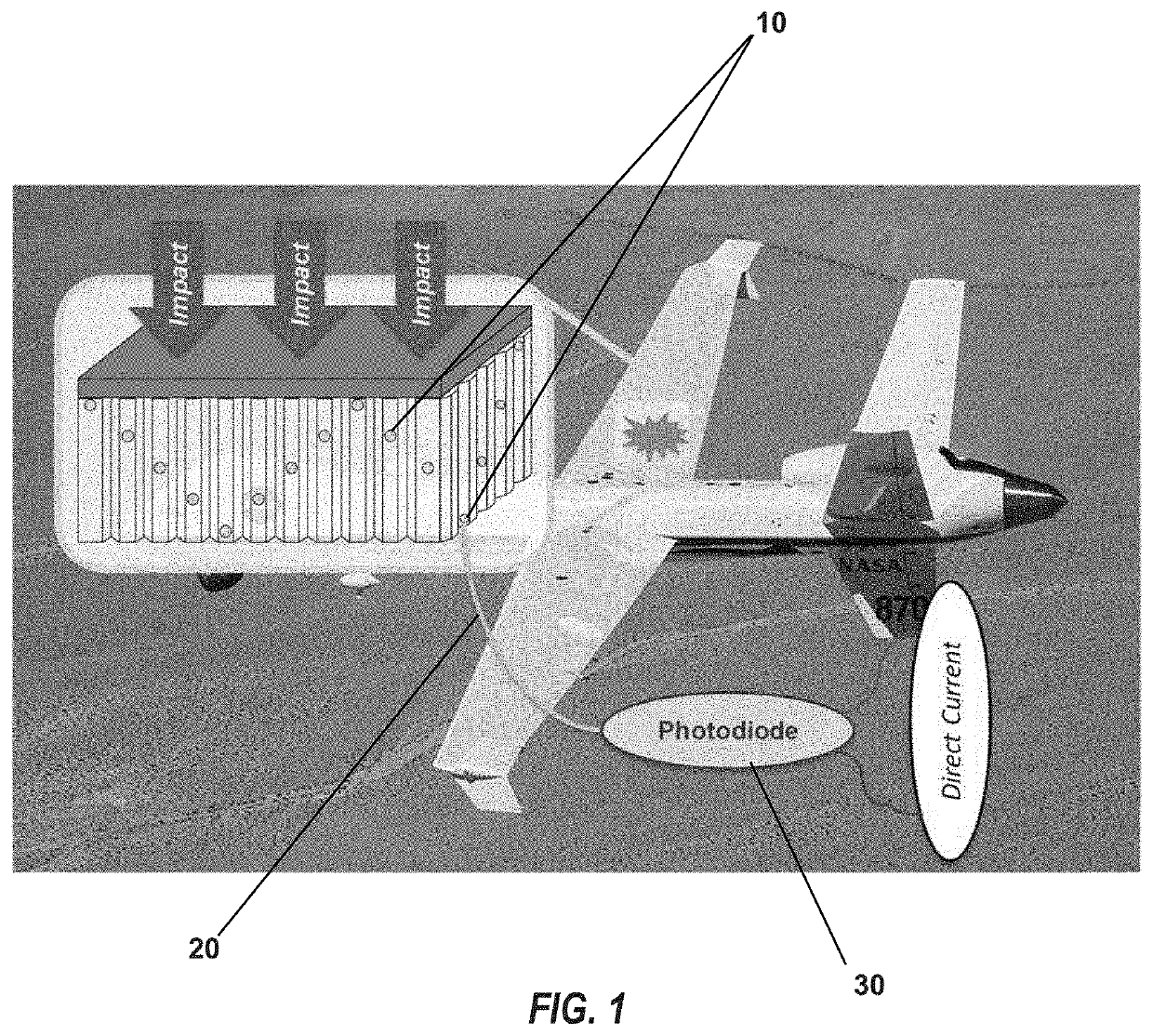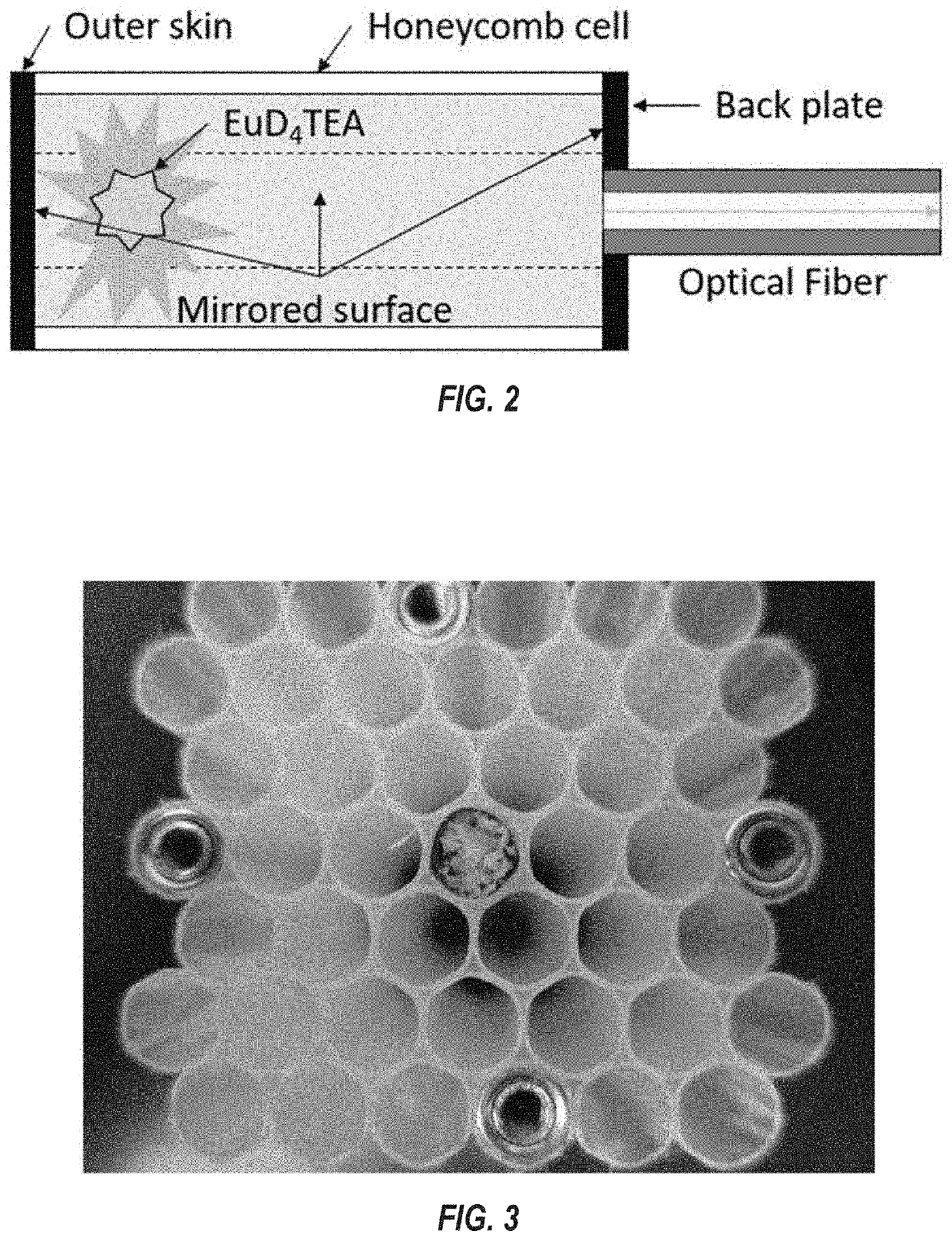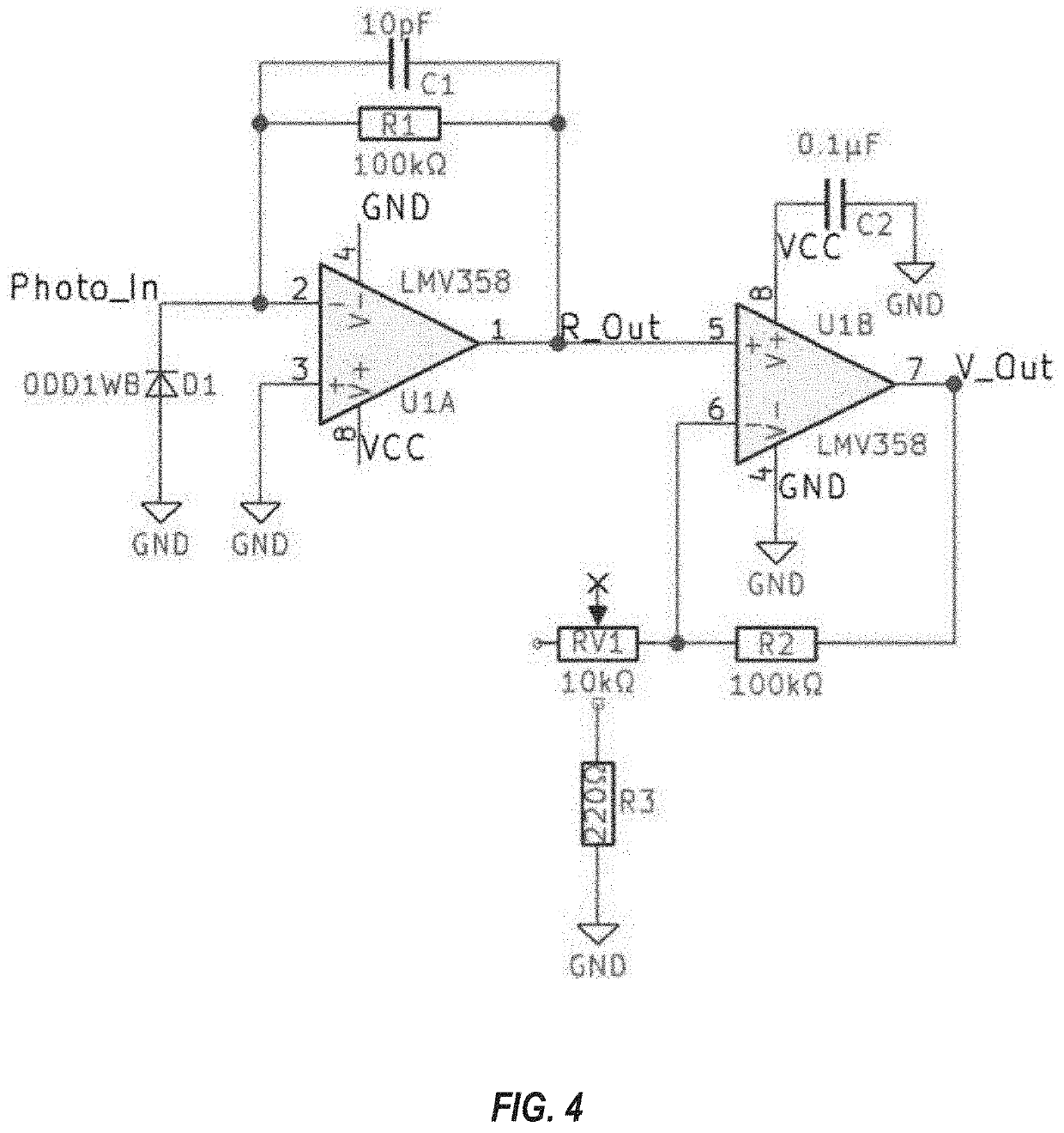Fracto-mechanoluminescent (FML) crystals-enhanced optical fiber-based impact sensor module
a technology of fracto-mechanoluminescent and optical fiber, applied in the direction of force measurement by measuring optical property variation, force/torque/work measurement apparatus, instruments, etc., can solve the problems of inability to detect damage occurrence below the surface of structural composites, limitations of the piezoelectric-based sensor network
- Summary
- Abstract
- Description
- Claims
- Application Information
AI Technical Summary
Benefits of technology
Problems solved by technology
Method used
Image
Examples
example 1
[0033]FIGS. 5A-5D show the representative sensor outputs at minimum and maximum impact energy from drop impact hammer tests with and without an aluminum top plate on a 76.2 mm×76.2 mm block of test composite comprising a 50.8 mm thick high-density polyethylene (HDPE) honeycomb core. An inner cell was lined with Mylar, and 62 mg of EuD4TEA crystals were added to the cell, which was then filled with a PDMS mixture. There are notable similarities between the sensor output with and without the aluminum top plate. The dips in the signal are caused by the impact hammer bouncing against the sample and causing more crystals to fracture. The mean output voltage was collected by averaging all of the data points above the threshold line. The threshold data was collected by a subroutine of the data acquisition system that runs before the test is ready. This subroutine takes 100 readings and returns either the average of the data or the highest noise value, whichever is larger. Any major discrep...
example 2
[0034]Synthesis of EuD4TEA FML crystals began from preparing a Europium(III) nitrate hydrate (ENH) / dibenzoylmethane (DBM) / trethylamine (TEA) solution in acetone. 8 mmol (=3424.34 mg) of ENH, 26 mmol (=5942.86 mg) of DBM, and 28 mmol (=3.9 mL) of TEA were added into 160 ml of acetone and manually stirred for 2 minutes without heating. Then, the solution was heated at about 40° C. and stirred at about 200 rpm for about 60 minutes on a hot plate. The solution was removed from the hot plate and covered with a paraffin film, which has a hole to allow slow evaporation of acetone at room temperature for about 48 hours. This slow acetone evaporation process is intended to allow EuD4TEA to form millimeter-size pellets as it crystallized. It should be noted that the evaporation time duration needs to be adjusted depending on the total volume of acetone. Precipitation of EuD4TEA crystals was observed about 4 hours after the room temperature evaporation is initiated. As time progresses, the siz...
example 3
[0044]EuD4TEA crystals were prepared according to the method of Example 2. To produce the composites for this example, aluminum and acrylic sheets were cut into 76.2 mm×76.2 mm squares. A sleeve of aluminum foil was placed on the wall of the center cell of a polypropylene honeycomb core. The reflective material was used to reflect all light emission from the EuD4TEA so it would be visible to the high-speed camera. PDMS was then poured into the center cell to the depth at which the EuD4TEA was to be situated and cured at 40° C. for 180 min. After the first layer was cured, EuD4TEA crystals were placed inside the cell, and more PDMS is added above the crystal and then cured. The test sample was then assembled in this order aluminum plate, polypropylene honeycomb, and acrylic sheet. The assembly is then fastened together using four nuts and four bolts. These are torqued to 5 Nm for consistent preloading. Once the assembly has been fastened together, the sides of the test sample were ma...
PUM
 Login to View More
Login to View More Abstract
Description
Claims
Application Information
 Login to View More
Login to View More - R&D
- Intellectual Property
- Life Sciences
- Materials
- Tech Scout
- Unparalleled Data Quality
- Higher Quality Content
- 60% Fewer Hallucinations
Browse by: Latest US Patents, China's latest patents, Technical Efficacy Thesaurus, Application Domain, Technology Topic, Popular Technical Reports.
© 2025 PatSnap. All rights reserved.Legal|Privacy policy|Modern Slavery Act Transparency Statement|Sitemap|About US| Contact US: help@patsnap.com



